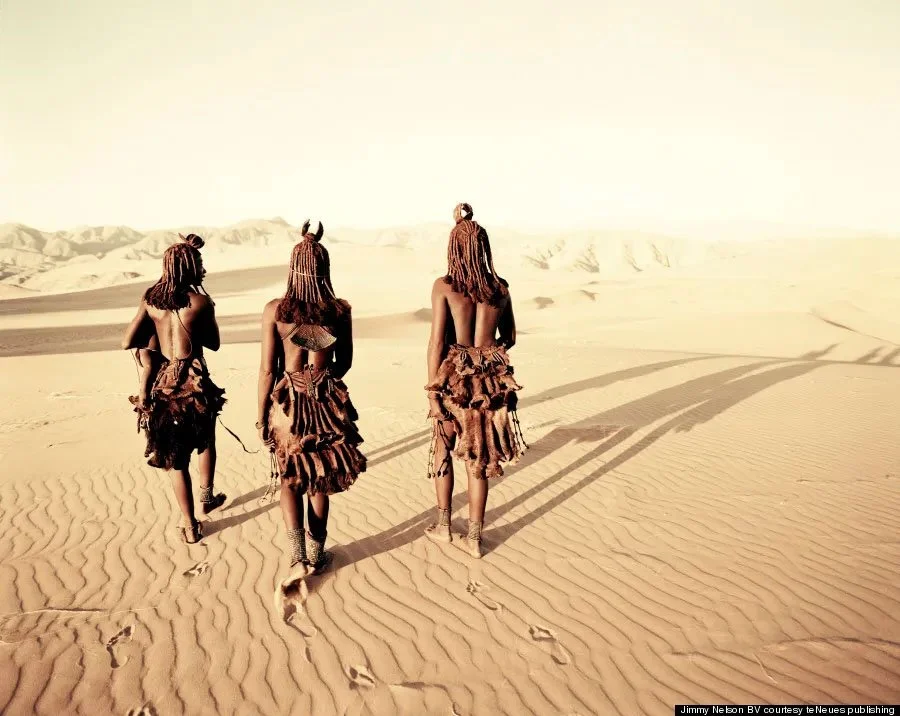little attempt at distance or objectivity ...
What we have is both an example of the interplay between photographs and text, and a fascinating insight into the mind of the British Raj. The photographs are, for the most part, conventional studio-type portraits of individuals, though there are some fine group studies. It is the texts that are the most revealing: a mixture of gossip, ethnography and military intelligence report, with little attempt at distance or objectivity.
Martin Parr and Gerry Badger – The Photobook: A History volume I
Silent Warriors
he disappeared into thin air ...
A group of natives had gathered around the spot where we had set up the camera. I photographed about 30 different people, and one of them was a drifter called Quinn. He took off his black baseball cap and for a split second his grey hair stood up high, and that was it. Then all hell broke loose. A drunken guy (not a Native) came and yelled at me: If you don’t stop photographing I shoot you in the head. One of the bystanders shouted back: Don’t speak about it, do it. Chris and I took off as quick as we could and that’s what Quinn did too, he disappeared into thin air. In the confusion of the situation we never got his name and address.
From the introduction to Silent Warriors by Eric Klemm
Jimmy Nelson Responds
Before They Pass Away
Thomas King on Edward Curtis
Curtis was fascinated by the idea of the North American Indian, was in fact obsessed with it. And he was determined to capture that idea, that image, before it vanished. This was a common concern among many intellectuals and artists and social scientists at the turn of the nineteenth century, who believed that, while Europeans in the New World were poised on the brink of a new adventure, the Indian was poised on the brink of extinction.
In literature in the United States, this span of time is known as the American Romantic Period, and the Indian was tailor made for it. With its emphasis on feeling, its interest in nature, its fascination with exoticism, mysticism and eroticism, and its preoccupation with the glorification of the past, American Romanticism found in the Indian a symbol in which all these concerns could be united. Prior to the nineteenth century, the prevalent image of the Indian has been that of an inferior being. The romantics imagined their Indian as dying. But in that dying, in that passing away, in that disappearing from the stage of human progress, there was also a sense of nobility.
I probably sound a little cranky – I don’t mean to. I know Curtis paid Indians to shave away any facial hair. I know he talked them into wearing wigs. I know that he would provide one tribe of Indians with clothing from another tribe because the clothing looked more “Indian.”
So his photographs would look authentic.
And while there is a part of me that would have preferred that Curtis had photographed his Indians as he found them, the men with crewcuts and moustaches, the women in cotton print dresses, I am grateful that we have his images at all. For the faces of the mothers and fathers, and aunts and uncles, the sisters and brothers who look at you from the depths of these photographs are not romantic allusions, they are real people.
Thomas King, The Truth About Stories: A Native Narrative. Massey Lecture Series 2003.
Eric Antoine's ensemble seul
Produced through the wet plate collodion process with vintage lenses, Antoine’s images bring us face to face with a haunting darkness. The frames on the wall contain ghosts and their shadows that have been pulled out of time. It is as if, forsaking reality, Antoine has managed to photograph memory itself.
photography has become a household word ...
… photography has become a household word and a household want; is used alike by art and science, by love, business, and justice; is found in the most sumptuous saloon, and in the dingiest attic—in the solitude of the Highland cottage, and in the glare of the London gin-palace—in the pocket of the detective, in the cell of the convict, in the folio of the painter and architect, among the papers and patterns of the millowner and manufacturer, and on the cold brave breast on the battle-field.
Lady Elizabeth Eastlake, from her 1857 essay on photography.




